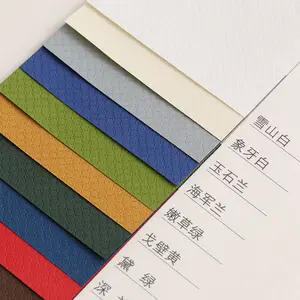















Bristol board paper, a versatile and sturdy paper stock, is a popular choice for a range of applications. This category of paper is known for its smooth surface and heavyweight, making it ideal for high-quality printing projects. The bristol board is typically made from wood pulp, providing a reliable base for various artistic and commercial uses.
The composition of bristol board paper can vary, with options such as wood pulp and mixed pulp. The type of pulp used influences the paper's characteristics, including texture and durability. Choices range from chemical-mechanical pulp to chemical pulp and mechanical pulp, each offering distinct benefits. For instance, thick bristol board is often preferred for its robustness, suitable for projects requiring a substantial feel.
Bristol board paper is compatible with various printing techniques, including offset printing, digital printing, and inkjet printing. This adaptability makes it an excellent substrate for detailed artwork and precise printing tasks. Artists and professionals frequently use bristol board for watercolor, as its smooth surface can handle the medium with ease. Additionally, sizes like 18x24 bristol board and bristol board paper A3 are commonly utilized for presentations and displays due to their ample space and excellent color reproduction.
Key features of bristol board paper include its anti-curl and moisture-proof properties, ensuring that the paper remains flat and intact during and after use. Some variants also boast antistatic qualities, reducing the likelihood of dust accumulation, which is crucial for pristine presentations. The 2 ply bristol paper is particularly noted for its extra strength and resilience, making it a preferred choice for projects that require a durable paper that can withstand handling and display.
Selecting the appropriate bristol board paper involves considering the intended use. For instance, bristol board watercolor artists might opt for a variant specifically designed to absorb and maintain the vibrancy of watercolors. Similarly, those in need of a large drawing surface might turn to a pad of bristol board or 14x17 bristol board for their ample working area. The thickness and size, such as 11x17 bristol paper or A2 bristol board, are also crucial factors, depending on the project's requirements.
Environmentally conscious buyers may seek bristol board paper that aligns with sustainable practices. It's important to consider the source of the pulp and the manufacturing processes involved in producing the bristol board. Recycled options or those certified by environmental standards organizations can be an attractive choice for those looking to minimize their ecological footprint while still benefiting from the high-quality characteristics of bristol board paper.